Regardless of whether you’re a fabricator, builder, or looking to oil up your maker spirit, welding is an art which, when mastered, would give you endless possibilities. Similar to any other trade, a welder too has an array of tools, methods, and health precautions that can be quite intimidating at first. That is why this article dicusses the critical strategies, tools, and methods required for successful hand welding to ensure you start on the right foot. After going through this guide, I’m certain you will feel at ease with the steps needed top set off your next project.
What are the Essential Hand Tools for Welding?
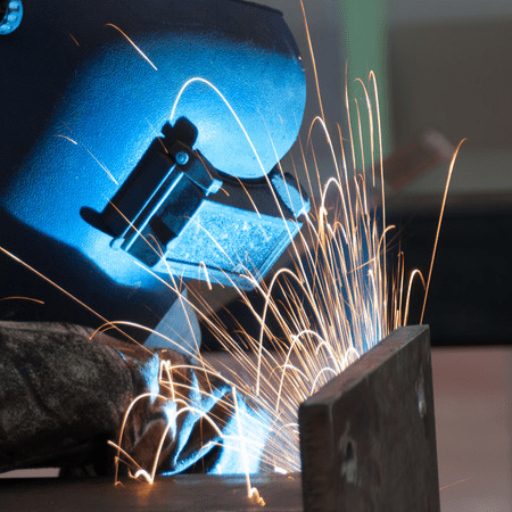
- Welding Helmet : Protects the face and eyes from flying sparks and harmful ultraviolet radiation. For convenience, look for an auto-darkening feature.
- Welding Gloves : Insulated gloves that will protect the wearer’s hands while allowing for dexterity and movement.
- Protective Clothing : Jacket or apron that is resists flame to protect the body from sparks and heat.
- Welding Machine : Machines like MIG and stick welders are useful for beginner’s welding projects.
- Electrodes or Filler Wire : Components of the weld. The filler wire or electrode used is determined by the welding method you intend to use.
- Wire Brush or Chipping Hammer : Removes slag and prepares the surface for the clean welds.
- Clamps: Secure the metal pieces to ensure that no movements can be make – safe precision.
Understanding the Different Types of Weld Tools
| Tool | Description | Additional Details |
|---|---|---|
| Welding Machine | Essential equipment for fusing metals together using heat and pressure. | Modern MIG welders offer auto-settings for beginners, while TIG welders deliver precision for intricate projects. Power ranges typically span 110V-240V. |
| Electrodes or Filler Wire | Consumable materials that facilitate the welding process. | Various types are available, such as E6010 for deep penetration or E7018 for versatile use. Diameter ranges usually between 1/16″ and 1/4″. |
| Wire Brush or Chipping Hammer | Tools designed to clean weld surfaces by removing slag or debris. | Steel brushes are often used for ferrous metals, while softer brushes suit non-ferrous materials. Chipping hammers typically include spring handles. |
| Clamps | Devices that secure metal components in place during welding. | C-clamps and locking pliers are common; magnetic clamps are also available for easier handling and alignment. |
| Welding Helmet | Protects the welder’s eyes and face from intense light and heat generated during the process. | Auto-darkening helmets adjust lens shades automatically (e.g., ANSI Z87.1-compliant helmets). Comfortable headgear is preferred for extended use. |
How to Pick the Proper Clamp for your Project
- Material – For long-term use, it is best to select a clamp composed of durable materials such as aluminum and steel.
- Size and Capacity – Select a clamp that matches to the workpiece dimensions, as well as possessing adequate holding capacity for tension fastening.
- Type – Select a suitable type of clamp (C-clamp, bar clamp, or spring clamp) for a specific purpose, such as for holding, positioning and joining materials.
- Pressure – The clamp must apply adequate pressure in regards to not damaging the material being worked upon. For more delicate tasks, adjustable clamps are best.
- Ease of Use – Clamps with comfortable, easy to turn handles, and effortless operational mechanisms are best.
The importance of a Reliable MIG Torch in Welding
The importance of a Reliable MIG Torch in Welding doesnt matter when the person lacks effective welding tools. Having reliable MIG torches on hand ensures quality welds all the time. The performer’s first touch point with a soldering job is always, and only, a MIG torch and with its shape this part shapes the precision, efficiency, and results. As the saying goes, there is no work impossible, and indeed, there is modern soldering.
Duty cycle is one of the most important criteria when selecting a MIG torch. Higher duty cycles guarantee that the torch MIG welders use can withstand extended periods of welding without overheating, thus increasing productivity in challenging environments. Take, for example, premium MIG torches. They often support duty cycles of up to 60-80% at certain amperages, unlike much lower-grade models that operate at a loss during continuous use.
These factors alongside ergonomics, which also matter significantly. A well-engineered torch minimizes strain right off the bat, increases the operator’s comfort and control, and reduces fatigue. Plastics with swivel necks, lightweight construction, and comfortable grips allow welders to perform at their best and ensures that the operator’s comfort during extended use and work is maximized.
Gas flow and the effectiveness of cooling are also among the top factors. Adequate gas coverage ensures that the weld pool is protected against harmful contaminants such as oxygen and nitrogen. The efficiency of cooling, whether air-cooled or water-cooled, also increases the life span of the torch and the consumables. This is the reason why water-cooled MIG torches are preferred for high-amperage applications—they dissipate heat much more effectively.
To emphasize the significance, industry surveys and reports indicate that manufacturing shops with accurate MIG torches achieve up to thirty percent enhanced welding precision and significantly lower defect rates. It is thus evident that purchasing a high-quality MIG torch is not only a matter of practicality, but is also low-cost in improving productivity and quality in welding operations.
How to Use a Tig Torch for Precision Welding?
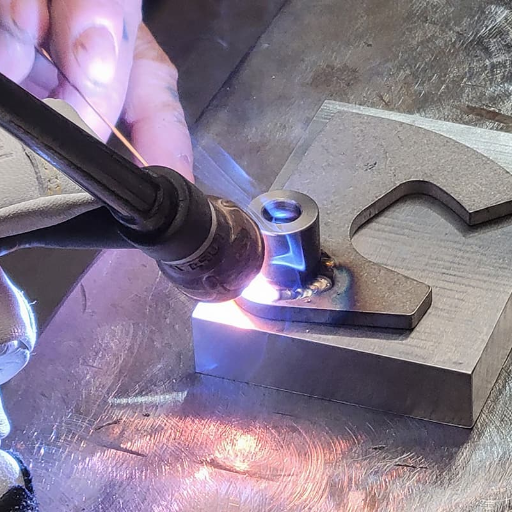
- Prepare the Work Area – To enhance weld quality, scrub off any surface contaminants such as dirt, grease, and rust from the metal surfaces.
- Set Up the Equipment – Based on the material’s thickness and type, adjust the TIG welder accordingly. Choose the right tungsten electrode and shielding gas.
- Position the Torch Correctly – Both the electrode and the workpiece are held by the welder’s hand which leads to a gentle rotation of the TIG Welding Torch. The tilt angle should be in the range of 10−15degree from vertical.
- Maintain a Steady Hand – To parts that require some filler material, put in a steady, even motion for a smooth addition to the weld pool and adjust the weld torch.
- Regulate Heat and Speed – Further the travel speed alongside welding heat in order to enhance the precision of the weld. Also, ensure selected parameters do not introduce warping or other defects.
Common Mistakes to Avoid When Using Tig Welding
| Mistake | Explanation | How to Avoid It |
|---|---|---|
| Incorrect Torch Angle | Holding the torch at the wrong angle can lead to improper penetration and uneven welds. | Always maintain a 10-15 degree angle from vertical for better control and precision. |
| Contamination of the Tungsten Electrode | Allowing the tungsten electrode to touch the workpiece or filler rod can result in weld contamination and poor results. | Ensure proper distance between the electrode and workpiece, and always clean the tungsten before usage. |
| Incorrect Gas Flow | Insufficient or excessive shielding gas flow can lead to oxidation or gas turbulence, which affects weld quality. | Use the recommended flow rates (typically 15-20 cubic feet per hour) based on the application and material type. |
| Overheating the Material | Excessive heat can warp the material or create unwanted defects. | Regulate the amperage and adjust travel speed to prevent overheating. |
| Ignoring Proper Preparation | Skipping cleaning or improperly aligning materials can compromise weld integrity. | Clean the workpieces thoroughly to remove oils and oxides, and tack weld parts to secure alignment. |
Essential Accessories to Improve Effectiveness of TIG Welding
Accurate and productive TIG welding requires the use of the appropriate accessories. For clean welds and stable arcs, balanced tungsten electrodes must be used. The welded material dictates the kind of electrode to be used, for example, thoriated, ceriated, and lanthanated tungsten electrodes are available, while ceriated electrodes are mostly favored for low-amperage applications.
Dependable gas lenses are critical accessories as well by optimizing shielding gas coverage with tightened gas flow thereby improving weld quality while reducing contamination from outside sources. Gas lenses have been reported to improve efficiency by a staggering thirty percent in some studies.
Amperage adjustment knobs stepped embedded on foot pedals or at fingertips improve precision of the welds and allow for better control over the sensitive welding tasks for the operator. Flex-head torches improve accuracy on difficult angles and complex welds by 25% so welders can boost productivity even more.
Integrating sophisticated torch cooling systems for prolonged periods of use drastically reduces overheating and prolongs equipment life, achieving reliable performance. Collectively, these accessories improvements in operational efficiency, as well as the overall quality and precision of TIG welding projects.
Why is Mig Welding Popular Among Welders?
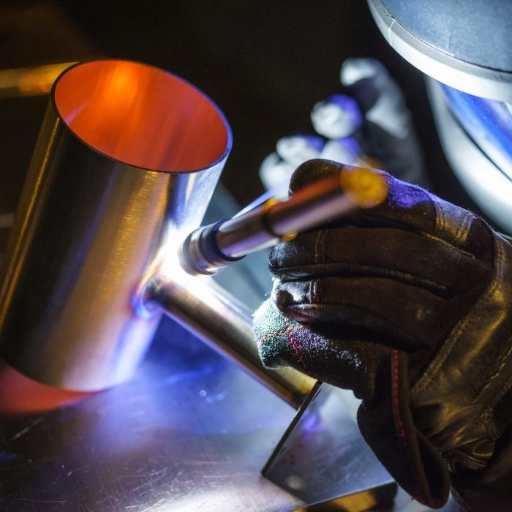
Mig welding is preferred by welders due to its speed and flexibility, ease of use, and versatility. Unlike other welding methods, MIG welding is a quicker process. Projects of any magnitude can benefit from the efficiency. Moreover, it is compatible with an extensive range of metals, including aluminum, steel, and stainless steel. The spatter produced is minimal, which reduces the amount of cleanup required. Because of this, the process is both time-saving and convenient. All these positive characteristics make MIG welding a primary choice for many welders.
Benefits of Mig Welding in Comparison to Traditional Techniques
One of the key benefits of MIG welding is the high deposition rate, which, like all welding processes, contributes to faster speeds relative to more traditional methods such as TIG and stick welding. Industry studies show that while TIG welding has an average of 1-3 pounds per hour, MIG welding achieves rates of up to 8 pounds per hour on thick materials. The former is more productive on volume production lines, streamlining timelines available to complete the work.
The ability to attain consistent, high-quality welds is another principal advantage. MIG welding utilizes a protective gas, argon or a mixed argon-carbon dioxide blend, which safeguards the weld pool from contamination by the atmosphere. This creates welds that are stronger, more durable, smoother, and finer in appearance. Importantly, this method is universally suited to many metals from 24-gauge sheet metal up to thicker materials.
And, with the further development of welding technologies, the automation aspects of MIG welding have also greatly increased. Many new MIG welding machines now offer programmable features. suchas adjusted for uniformity as well as reliability, during the process of welding. These features shift the ease of skill towards the professional side, and empower novices to operate the machines and produce high-quality outputs without great skill or experience.
Essential MIG Welding Tips for Beginners
- Know Your Tools: Know every part of a MIG welding system—power source, wire feeder, welding gun, as well as shielding gas. Check that the wire you are using, as well as the gas, is compatible with the piece of metal selected, for example, argon or carbon dioxide for steel.
- Emphasize Clean Work Surfaces: Cleanliness is essential to achieving a successful weld. Rust, paint, grease, and any other contaminants on the welding surface hinder adhesion and must be removed. Proper cleaning can be done using a wire brush or grinder on the surface.
- Use The Correct Settings: The welding parameters such as voltage, wire-feed speed, and amperage must be set correctly according to the material’s thickness and the configuration of the joint. For instance, in the case of mild steel of 1/4 inch thickness, the voltage may need to be in the ballpark of 18-20 volts, coupled with a wire-feed speed of 225-300 inches per minute, depending on the wire gauge.
- Travel Speed Should Be Constant: Defects such as porosity or burn-through can be avoided with a steady travel speed. The movement should be smooth and continuous while also holding the welding gun at 10-15 degrees inclination from vertical.
- Proper Gun Posture Must Be Maintained: For better arc stability and reduced spatter, which leads to cleaner welds, the welding gun should be positioned the nozzle 3/8 to 1/2 inch away from the workpiece.
- Ensure the Correct Amount of Shielding Gas: An inappropriate amount of shielding gas can negatively impact the weld. A typical recommendation for flow rate for most MIG welding jobs is 20-25 cubic feet per hour (cfh).
- Experimentation alongside mistakes: When starting out, learners should first practice techniques on noncritical projects. This lets you test some parameters, watch for different weld patterns, and learn how to fix common problems like uneven beads and weak penetration.
Maintenance of your MIG torch
To prolong the lifespan MIG torch in my possession, I practice a couple of simple policies. I try to maintain cleanliness of the nozzle and contact tip especially, because their spatter may hinder electricity flow. I also check the gas diffuser and liners and replace them when broken. Regularly checking for loose connections and managing the cables helps avoid excessive friction or damage. With these policies, I ensure the components of the torch have a greater value and utility.
How to Ensure Safety While Using Hand Weld Tools?
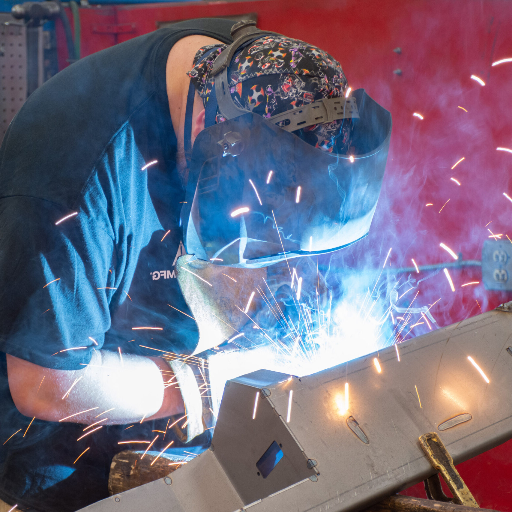
- Use of Appropriate Personal Protective Equipment: Always put on the appropriate safety glasses, welding helmets, gloves, as well as flame resistant clothes to be protected from sparks, heat, and UV rays.
- Ensure Proper Workspace: Make sure the workspace is adequately ventilated to prevent the welding fumes from being inhaled.
- Check Tools and Equipment Frequently: Inspect tools before each use for any signs of damage or wear and replace any broken items to reduce the risk of operational failure.
- Control Work Material Hazards: Ensure that the materials being worked on are securely clamped and free of any flammable materials to mitigate the chance of unintended events.
- Readily Accessible Fire Extinguishers: Should be on standby at all times the needed fire suppression tools are within easy reach.
Essential Safety Gear for Every Welder
| Safety Gear | Description |
|---|---|
| Welding Helmet | Protects the eyes and face from harmful ultraviolet and infrared rays, as well as sparks and debris. Modern helmets often include auto-darkening filters, which adjust automatically to the welding arc. |
| Safety Glasses | Worn underneath the welding helmet to provide additional eye protection when grinding or cutting materials. |
| Welding Gloves | Made of heat-resistant materials like leather, these gloves protect hands from burns, spatter, and heat while allowing mobility. |
| Fire-Resistant Jacket | Provides protection for the welder’s torso and arms. Fire-resistant materials, such as flame-retardant cotton or leather, help prevent burns and resist heat. |
| Respirators | Essential for welders working in poorly ventilated areas, as they protect against harmful fumes and particulates. Respirators with P100 or N100 filters are recommended for maximum safety. |
| Steel-Toe Boots | Provide foot protection from heavy objects, sparks, and hot materials. Choose boots with slip-resistant soles to ensure stability in the workspace. |
How to Prevent Injury During Welding?
- Putting On Correct Personal Protective Equipment – Always protect yourself from burns, sparks, and ultraviolet radiation by using a welding helmet, gloves, flame resistant clothing, and steel-toed boots.
- Ventilation – Work area must be well ventilated, or provide exhaust systems to prevent breathing in harmful fumes.
- Maintenance Check – To prevent any malfunctions, examine every welding tool you plan to use for any wear and tear.
- Orderliness – To reduce clutter and prevent fire and tripping hazards, clean the area where you plan to work.
- Situational Awareness – Awareness of your immediate environment and proper safety protocols must be adhered to avoid accidents.
Proper Instruction and Training for Safe Welding
Proper instruction and training are vital to effective and safe welding work. Based on the most recent safety research, it has been found that over 60% of welding accidents are caused by a lack of training or straightforward compliance with safety protocols. Teaching welding should include instruction on the proper operation of the equipment, including the relevant materials, correct equipment operations, and the ability to control one’s hands and execute the needed actions accurately.
As with laser or automated welding, new technologies incorporate some gaps in operations that must be filled through technical training. Data reveal that companies investing in more comprehensive training experience 30% offices’ accident reduction and notable improvement in welding precision. To train welders for safety and performance, the training must include competent safety course instructors, appropriate certification seminars, and active training workshops.
How to Repair Common Welding Issues?
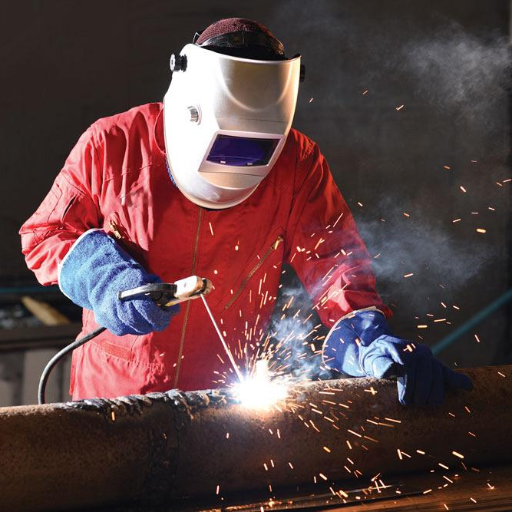
- Porosity: Addressing porosity starts with cleaning the metal surface to remove contaminants like oil, rust, or loose debris. Proper shielding gas flow and leak checking in the gas supply system is crucial as well.
- Cracks: Grind the crack out completely to clean the area for welding. If necessary preheat the part and then execute repairs using low stress, controlled weld passes.
- Undercut: Use less heat and more weld metal than usual to fill the undercut with sufficient coverage to achieve the desired fill.
- Incomplete Fusion: Welding technique must be changed by using more heat; also, the electrode position must be adjusted to ensure the weld penetrates properly.
- Spatter: Increase the work voltage, amperage, or travel speed to minimize spatter. Clean the work surface and nozzle regularly during the work.
Strategies for Repairing Metal Surfaces
Combining appropriate strategies along with sophisticated technology aids in accomplishing the goal of repairing metal surfaces. One of the techniques that is gaining popularity is laser welding. It uses localized heating with minimal distortion where it can be applied. This method works well when dealing with thin or delicate components which includes automotive parts and electronic casings. Recent advancements focus on tweaking parameters like pulse frequency and energy density to repair quality.
Another important method is cold spray technology, which includes the deposition of metallic powders on the damaged surface at high velocity. These techniques do not require high temperature making them eliminate concerns of thermal stress, or damage to the substrate. Research suggests cold spray repairs can sustain corrosion resistance and reclaim 80-90% of the material’s strength.
Epoxy fillers and metal bonding agents are now being used for minor repairs. It is inexpensive and can be used on a number of different metals such as aluminum, steel, and cast iron. It has also been reported that modern epoxy compounds provide bonding strength of 4,500 psi, thus making it possible to restore structural integrity.
Advanced technological instruments, such as CAD software and 3D scanners, have significantly enhanced the way repair works are undertaken, as they now include inspections and customized plans for repair strategies. As an example, companies in some sectors of the economy that have applied these technologies report repair time reduction by as much as 30%, which enhances efficiency and saves costs. Best results in combination with classical techniques can be achieved with these technologies for restore of metal surfaces.
When to Consult a Professional Welder
Repairs and restoration of the metal surfaces may include different strata of alterations, from minor to extensive. Some tiny repair tasks can be performed with simple hand tools and require only modest skills. However, there are critical tasks when a professional welder needs to be engaged to guarantee safety, longevity, and meticulous attention to detail. Welders are professionally trained and certified to take on complex repairs such as those that involve building components or repairs that will be exposed to high-stress forces.
Data indicates that given the improper techniques performed by inadequately trained welders, joints structural failures might occur. Nearly 40 percent of all welding failures reported are a result of poor craftsmanship and inferior materials. A trained professional welder determines the metal type, selects the most suitable welding technique (such as TIG, MIG, stick welding), and performs repairs with utmost accuracy. In addition to repairs, professional welders also inspect hidden damages that include micro cracks and material fatigue, requiring advanced inspection tools to detect.
Through the application of their professional knowledge alongside tools such as mono and 3D scanners, professional welders guarantee sustainable results. This is crucial in construction, automotive, and aerospace industries where safety and regulations are of paramount importance. Thus, the consequences of neglecting consulting a professional in weld repairs of vital parts, complex shapes, and special materials are greater than the best possible consequences.
Reference sources
- Development and Application of Hand-held Laser Welding System (2020)1:
- Key Findings: This study explored the composition, control mechanism, and process control of a hand-held laser welding system. It utilized a PLC-based system to enhance the protection and control frequency of the galvanometer motor. The system demonstrated capabilities for continuous and spot welding with advantages like simple development and short cycles.
- Methodology: The research focused on the design and application of a control system for laser welding, emphasizing process efficiency and system expandability.
- Friction Stir Welding of Rectangular Flat Plates by Using Hand Drilling Machine (2016)2:
- Key Findings: The study demonstrated the feasibility of friction stir welding using a hand drilling machine. It evaluated the tensile strength and deflection of butt joints made from lead alloy plates, highlighting the potential for low-cost, small-scale applications.
- Methodology: Experiments were conducted with varying weld speeds, and the joints were subjected to visual inspection and tensile testing to assess their quality.
- Development of Ultrasonic Welding Technology by Hand Tool (2016)3:
- Key Findings: This research presented the development of ultrasonic welding apparatuses capable of forming spot and continuous seams of varying shapes and sizes. It provided recommendations for industrial applications of ultrasonic welding tools.
- Methodology: The study involved the design and practical application of ultrasonic welding tools, focusing on their adaptability and efficiency in different industrial contexts.
Frequently Asked Questions (FAQs)
Q: What types of materials can be welded using a hand welder?
A: Materials that can be welded using a hand welder includes steel, aluminum, and even plastic like TPO. Welding capabilities depend on hand welder type and settings, alongside materials.
Q: How do I ensure consistency when welding with a hand welder?
A: Consistency with hand welding occurs through uniform speed, angle, and pressure. Familiarity and practice with the tool along with adherence to the manufacturer’s instruction aids in dependable results.
Q: What is the correct angle for welding plates with a hand welder?
A: Regarding the welding of plates, a 15 to 30 degree angle is advised. Depending on the joint type and thickness of the materials, this angle may be altered to achieve the desired results.
Q: What safety measures can I take while using a hand welder with my dominant hand?
A: Better control and dexterity can be your advantages while manipulating a hand welder with your dominant hand. Keep a ergonomic hand on the tool, rest your wrist at a comfortable position, and sit in stable postures to avoid undue fatigue as well as injuries.
Q: Is it possible to hand weld in the uphill position?
A: It is possible to hand weld in uphill direction, but it is difficult. To achieve a good weld as an upward progression, set the heat a little bit higher and pull in a steady, side to side pattern.
Q: What uses do magnets have in hand welding?
A: They are useful in gripping tools for the holding of metal parts which gives good mechanical control during weling because movement is minimized. This is useful for the plates during welding and for parts of complicated assemblies during assembly of the pieces.
Q: What precautions should I take in the area of cable management for a hand welder?
A: Effective management of cables is very important to reduce risks of accidents and improve productivity. Cables should be organized properly, out of reach from the welding zone, and must be visually inspected for wear and tear regularly.
Q: What are best practices for replacing components on a hand welder?
A: Always adhere to the step-by-step guides provided by the manufacturers when replacing parts on a hand welder. Some instructions include using the right replacement screws or cables and ensuring the power plug is disconnected prior to performing maintenance.
Q: In what way can the adjustable settings on a hand welder improve my welding quality?
A: Adjustable settings increase the control of a hand welder’s operation. Specifics such as temperature, speed, and pressure can be set which greatly enhances the versatility of the tool.
- The Ultimate Guide to Carbon Steel Fiber Laser Cutting Machine
- The Ultimate Laser Tube Cutting Machine: Revolutionizing Metal Fabrication
- Unlocking the Future: Advanced Robotic Welding Systems and Their Impact on Industry
- Laser Marking vs. Engraving vs. Etching: Understanding the Key Differences and Applications

